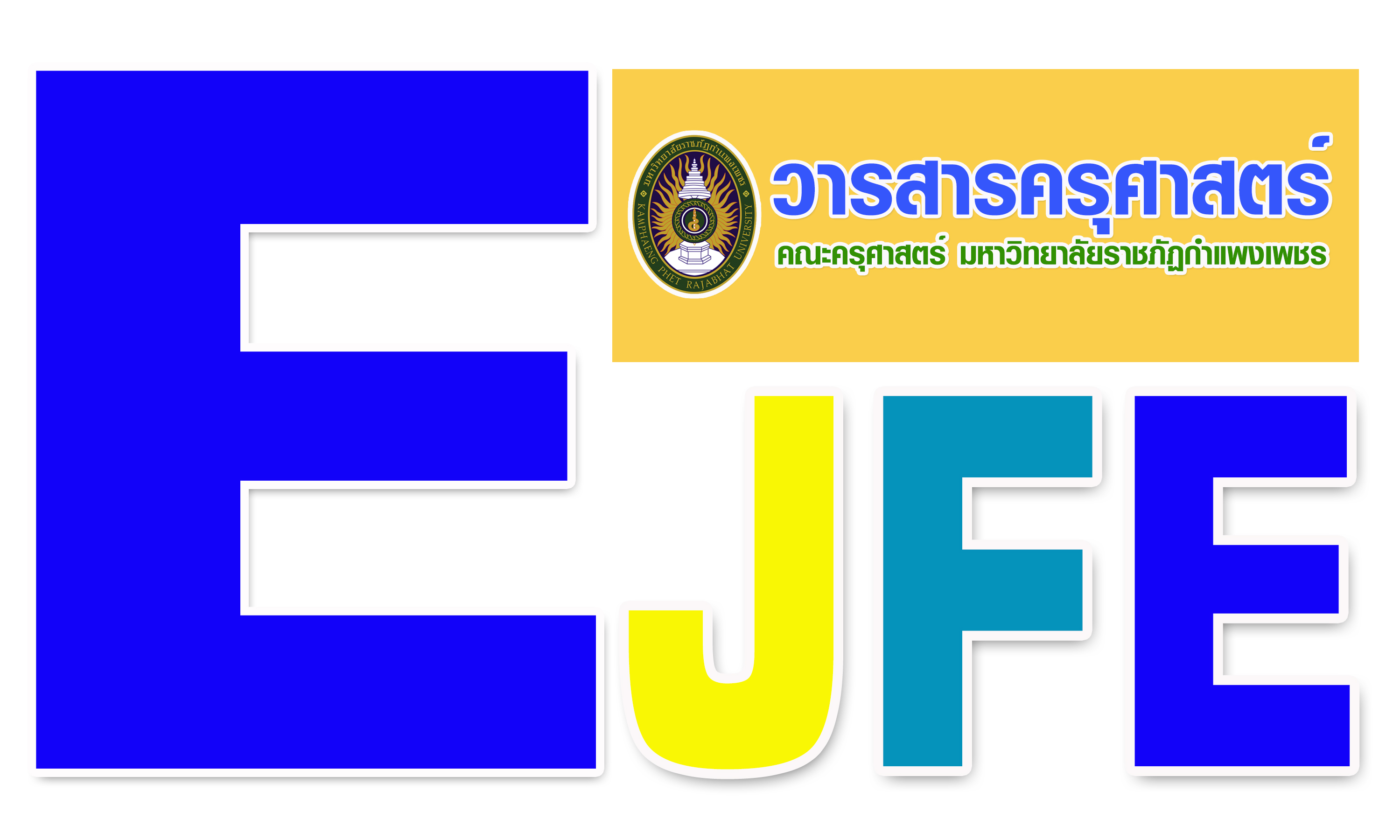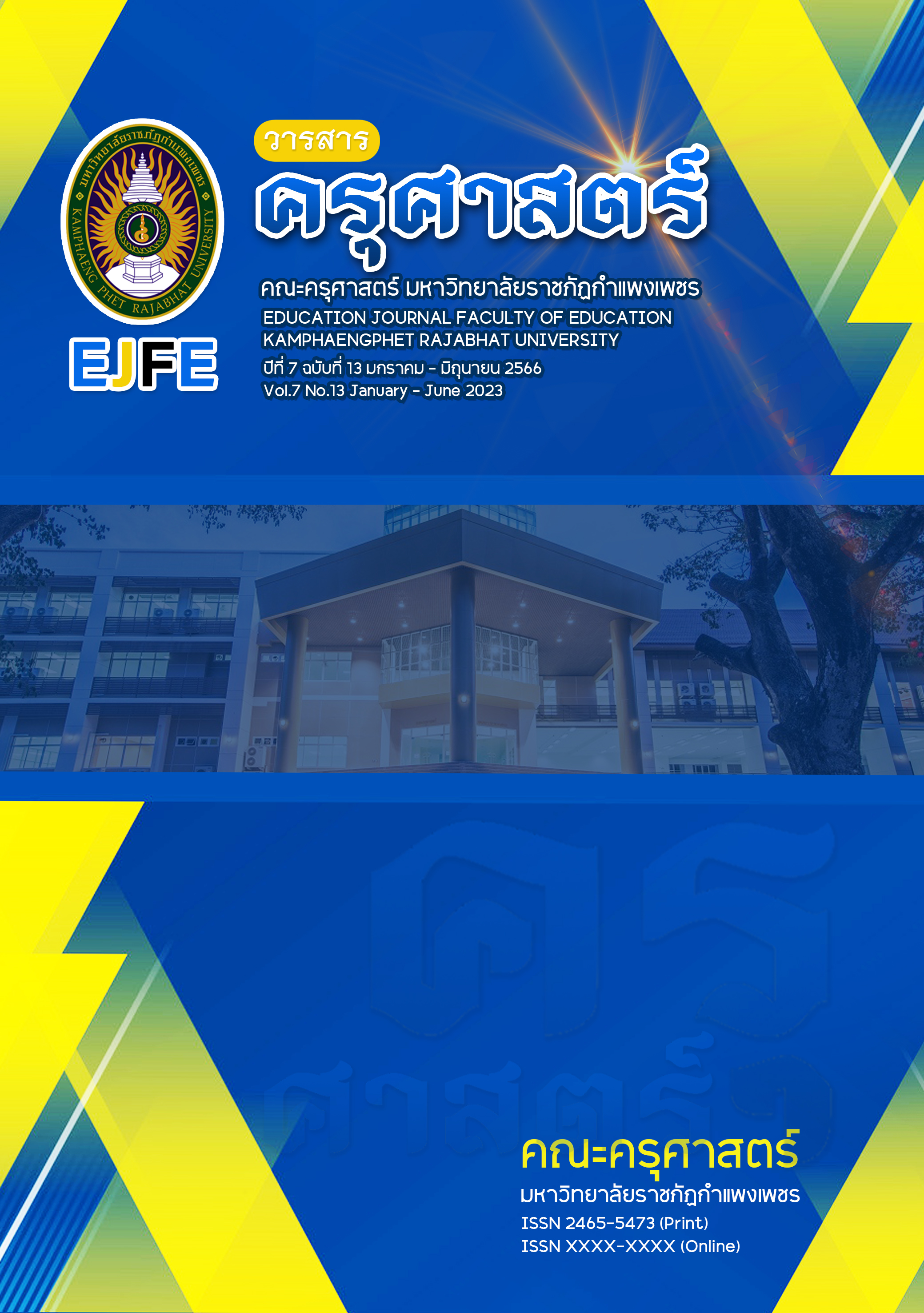A Study of Mathematical Problem Solving Ability on The Problems of Linear Equations with One Variable by Brain-Based Learning Management together with KWDL Techniques of Matthayomseuksa 1 Students
Main Article Content
Abstract
The purposes of the research were 1) to study mathematical problem solving ability on the problems of linear equations with one variable of Matthayomseuksa 1, 2) to compare mathematical problem solving ability on the problems of linear equations with one variable of Matthayomseuksa 1 by brain-based learning management together with KWDL techniques with the criterion 70% and 3) to study the satisfaction of Mathayomsuksa 1 students towards learning management on the problem of linear equation with one variable by brain-based learning management together with KWDL technique. The sample group used in the research were 44 students in Mathayomsuksa 1 of Thetsaban 1 Buri Rat Darun Witthaya School by Cluster Random Sampling. The research instruments used to collect data were Mathematics lesson plan on the problem of linear equations with one variable by using the brain base learning together with KWDL techniques, mathematical problem solving ability test and questionnaire of satisfaction. Data were statistically analyze by percentage, mean, standard deviation and mean hypothesis test of 1 population.
The result revealed as follow : 1) More than 60% of students had the mathematical problem solving ability in 3 issues that were problem understanding, show the solution to find the answer, and summarizing and checking answers, 2) Mathematical problem solving ability on word problems of linear equations with one variable of matthayomseuksa 1 by using brain-based learning together with KWDL techniques higher than the criteria of 70% with statistically significant at the .01 level and 3) Students had the satisfaction toward brain-based learning management together with KWDL technique at the high level as a whole.
Article Details

This work is licensed under a Creative Commons Attribution-NonCommercial-NoDerivatives 4.0 International License.
CC Attribution-NonCommercial-NoDerivatives 4.0
References
กนกพร เทพธี. (2558). ผลของการจัดกิจกรรมการเรียนรู้โดยใช้เทคนิค KWDL ที่มีต่อความสามารถในการแก้โจทย์ปัญหาและความคงทนในการเรียนคณิตศาสตร์ เรื่อง ระบบสมการเชิงเส้นสองตัวแปร. วิทยานิพนธ์ วท.ม. (คณิตศาสตรศึกษา). อุบลราชธานี : มหาวิทยาลัยอุบลราชธานี.
ชัยวัฒน์ สุทธิรัตน์. (2558). 80 นวัตกรรมการจัดการเรียนรู้ที่เน้นผู้เรียนเป็นสำคัญ. (พิมพ์ครั้งที่ 6). นนทบุรี : พี บาลาซ์ดีไซด์แอนปริ้นติ้ง.
บุญชม ศรีสะอาด. (2556). การวิจัยเบื้องต้น. (พิมพ์ครั้งที่ 9). กรุงเทพฯ : สุวีริยาสาสน์.
ปัทมาวรรณ ดวงจันทร์. (2562). การพัฒนาผลการจัดการเรียนรู้ เรื่อง การคูณ ของนักเรียนชั้นประถมศึกษาปีที่ 4 ที่จัดการเรียนรู้โดยใช้สมองเป็นฐาน (BBL)ร่วมกับ เทคนิค KWDL. วิทยานิพนธ์ ค.ม. (หลักสูตรและการสอน). อุตรดิตถ์ : มหาวิทยาลัยราชภัฏอุตรดิตถ์.
ปาริสา ไชยกุล. (2563). ผลการจัดการเรียนรู้ เรื่อง การบวก ลบ คูณ หารระคนโดยใช้สมองเป็นฐาน ร่วมกับ เทคนิค KWDL ที่มีต่อความสามารถในการแก้ปัญหาทางคณิตศาสตร์ และความสามารถในการคิดวิเคราะห์ของนักเรียนชั้นประถมศึกษาปีที่ 3. วารสารวิชาการมหาวิทยาลัยราชภัฏศรีสะเกษ, 14 (3), 61-71.
สถาบันทดสอบทางการศึกษาแห่งชาติ (องค์การมหาชน). (2564). สรุปผลการทดสอบทางการศึกษาระดับชาติขั้นพื้นฐานชั้นมัธยมศึกษาปี ที่ 3 ปีการศึกษา 2563 O-NET.[Online]. Available : http://iets.or.th/uploads/editor/files/O-NET/3.pdf.[2565, กรกฎาคม 24].
สถาบันส่งเสริมการสอนวิทยาศาสตร์และเทคโนโลยี. (2563). หนังสือเรียนรายวิชาคณิตศาสตร์พื้นฐาน คณิตศาสตร์ เล่ม 2 ชั้นมัธยมศึกษาปีที่ 1 กลุ่มสาระการเรียนรู้คณิตศาสตร์ (ฉบับปรับปรุง พ.ศ. 2560) ตามหลักสูตรแกนกลางการศึกษาขั้นพื้นฐาน พุทธศักราช 2551. กรุงเทพฯ : สกสค.
อังสนา ศรีสวนแตง. (2556). การพัฒนาผลการเรียนรู้ เรื่อง โจทย์ปัญหาระคนของนักเรียน ชั้นประถมศึกษาปีที่ 4 ที่จัดการเรียนรู้โดยใช้สมองเป็นฐาน (BBL)ร่วมกับเทคนิค KWDL. วารสารวิชาการ Veridian E-Journal, 6 (2), 223-236.
Caine, R. N. & Caine, G. (1990). “Understanding a Brain-Based Approach to Learning and Teaching.”. Educational Leadership, 48(2), 66-70.
Shaw, J. M. (1997). Cooperative Problem Solving; Using K-W-D-L as an Organizational Technique. New York : McGraw-Hill.


